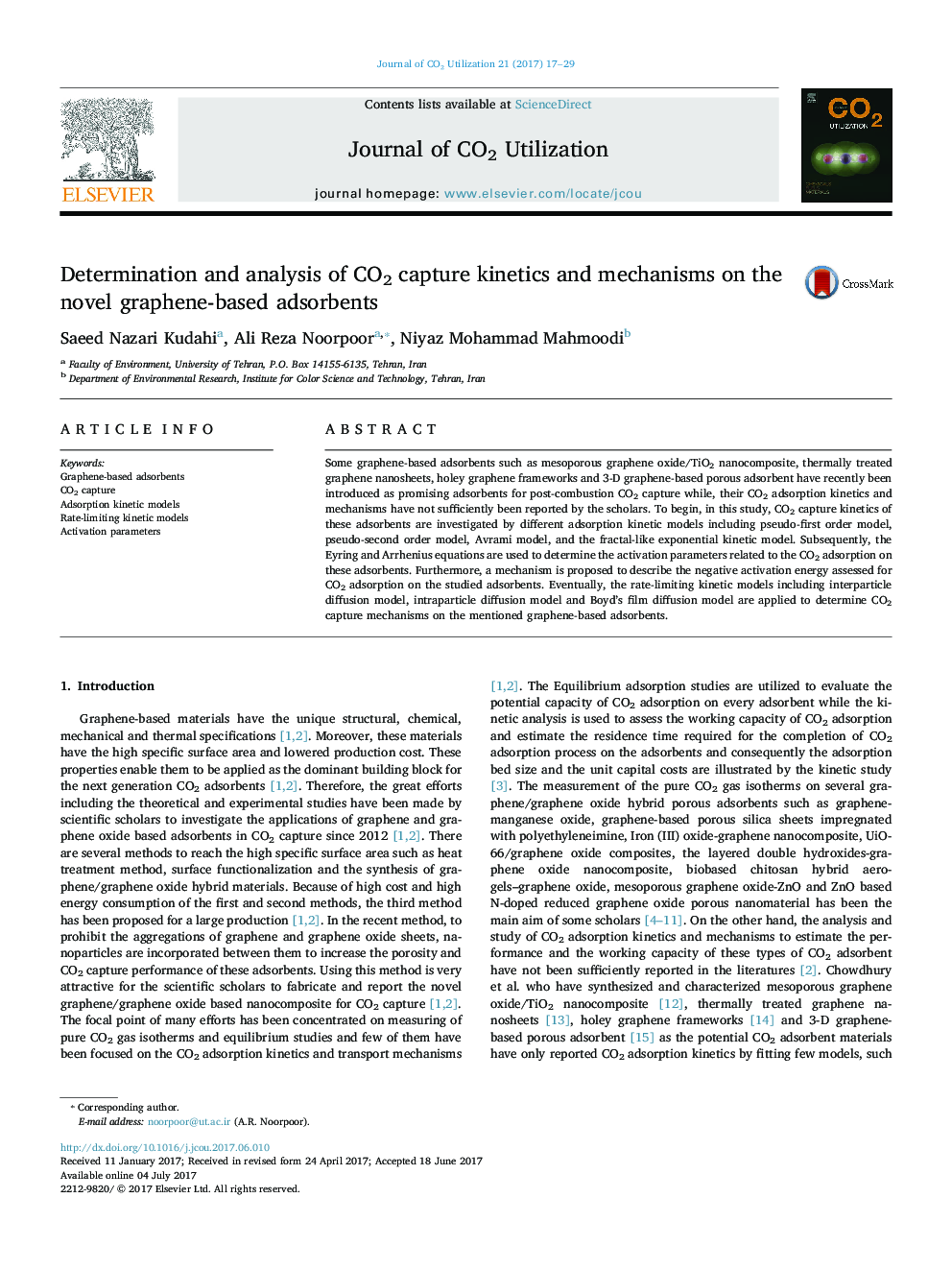| Article ID | Journal | Published Year | Pages | File Type |
|---|---|---|---|---|
| 6456015 | Journal of CO2 Utilization | 2017 | 13 Pages |
â¢The fractal like exponential kinetic model accurately predictes the CO2 adsorption rate.â¢A mechanism for CO2 capture based on the enthalpic and entropic approach is proposed.â¢The graphene-based adsorbents show three-stage CO2 capture at various temperatures.â¢Film diffusion and intraparticle diffusion are the main steps of the CO2 capture process.
Some graphene-based adsorbents such as mesoporous graphene oxide/TiO2 nanocomposite, thermally treated graphene nanosheets, holey graphene frameworks and 3-D graphene-based porous adsorbent have recently been introduced as promising adsorbents for post-combustion CO2 capture while, their CO2 adsorption kinetics and mechanisms have not sufficiently been reported by the scholars. To begin, in this study, CO2 capture kinetics of these adsorbents are investigated by different adsorption kinetic models including pseudo-first order model, pseudo-second order model, Avrami model, and the fractal-like exponential kinetic model. Subsequently, the Eyring and Arrhenius equations are used to determine the activation parameters related to the CO2 adsorption on these adsorbents. Furthermore, a mechanism is proposed to describe the negative activation energy assessed for CO2 adsorption on the studied adsorbents. Eventually, the rate-limiting kinetic models including interparticle diffusion model, intraparticle diffusion model and Boyd's film diffusion model are applied to determine CO2 capture mechanisms on the mentioned graphene-based adsorbents.
Graphical abstractDownload high-res image (169KB)Download full-size image
